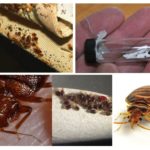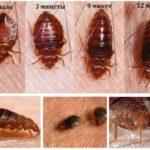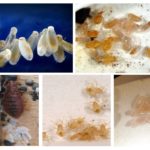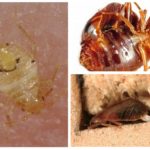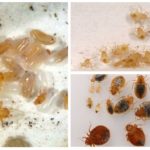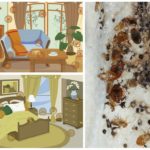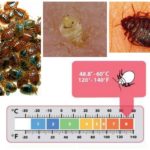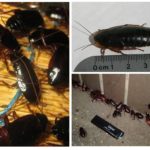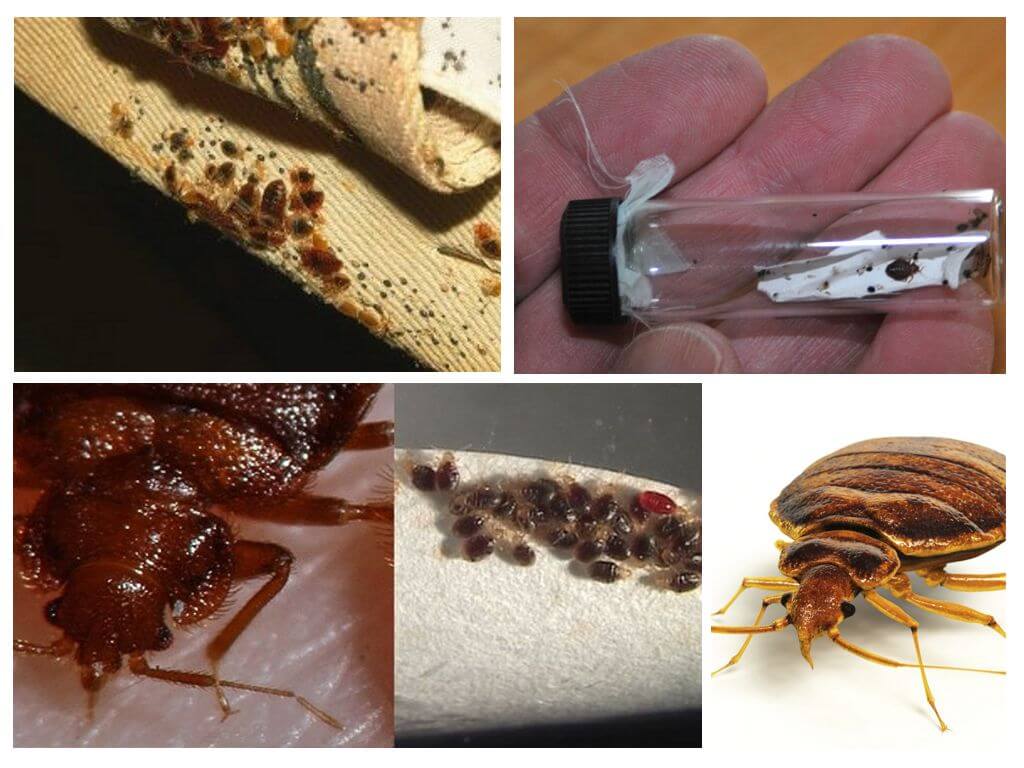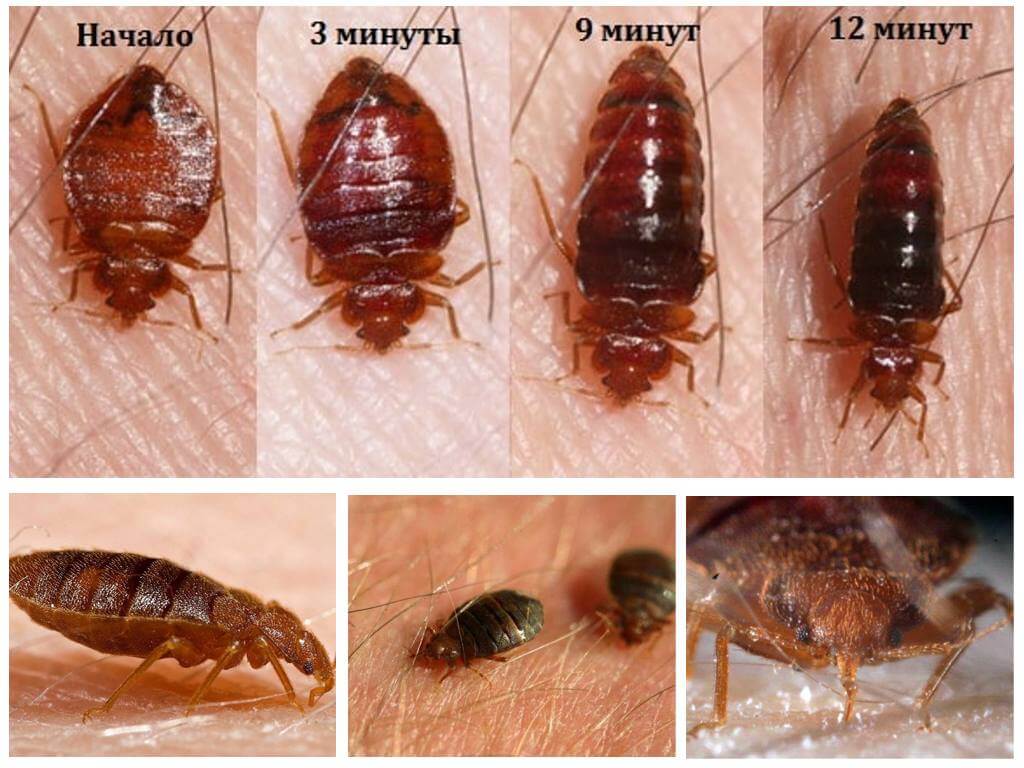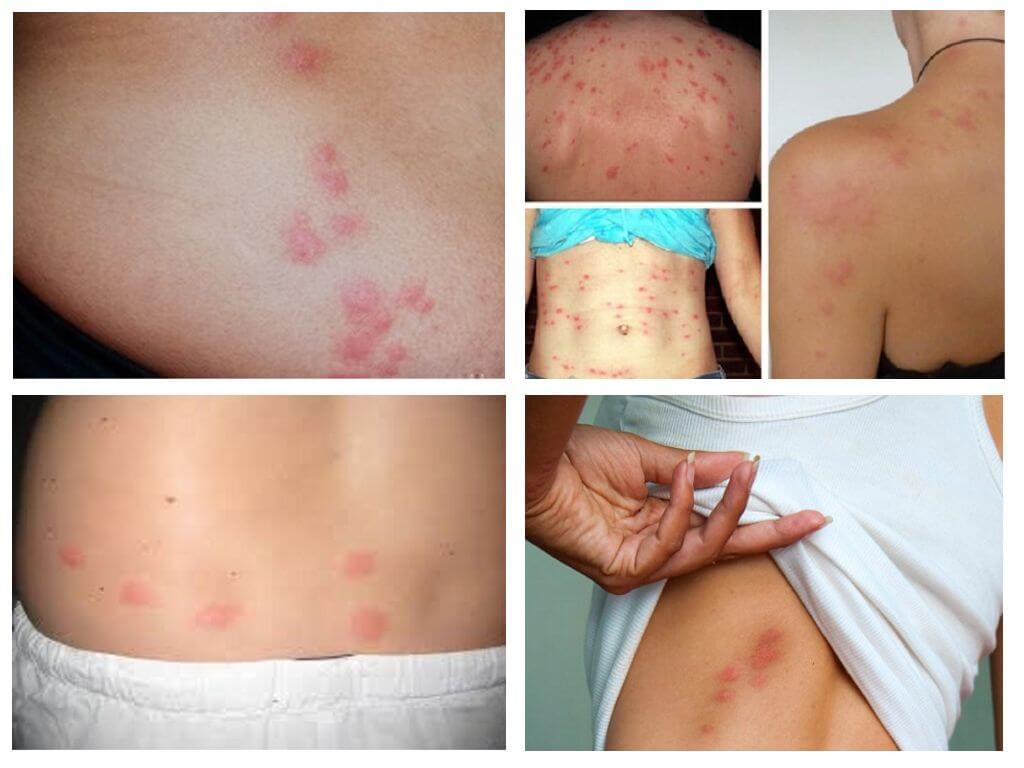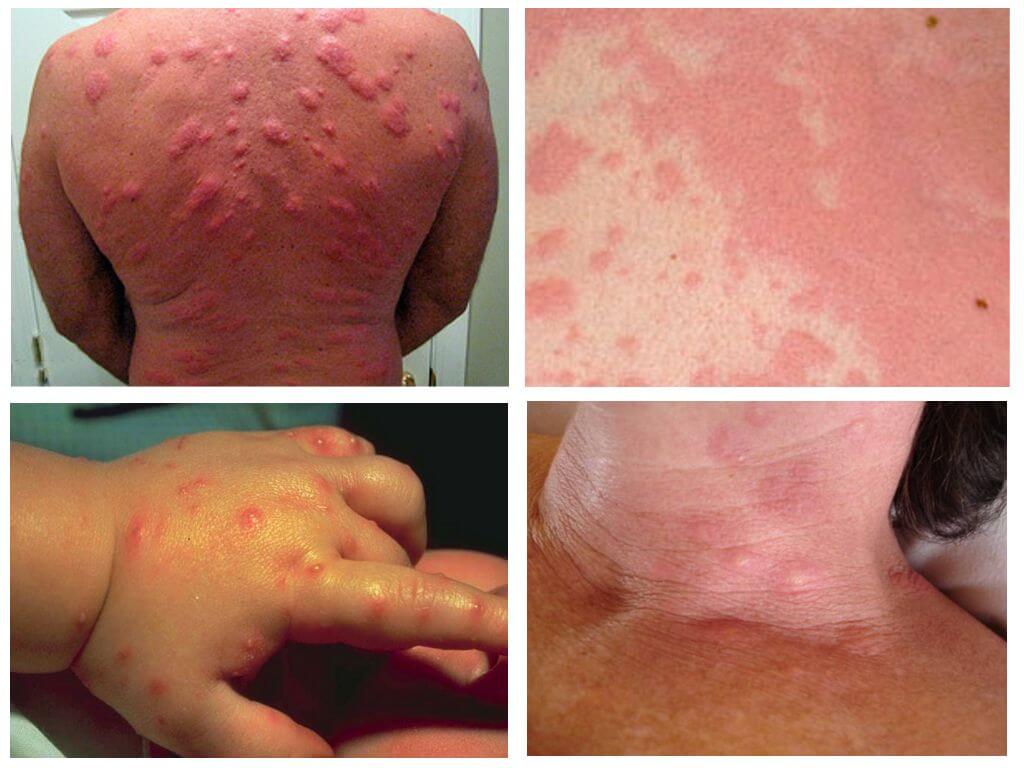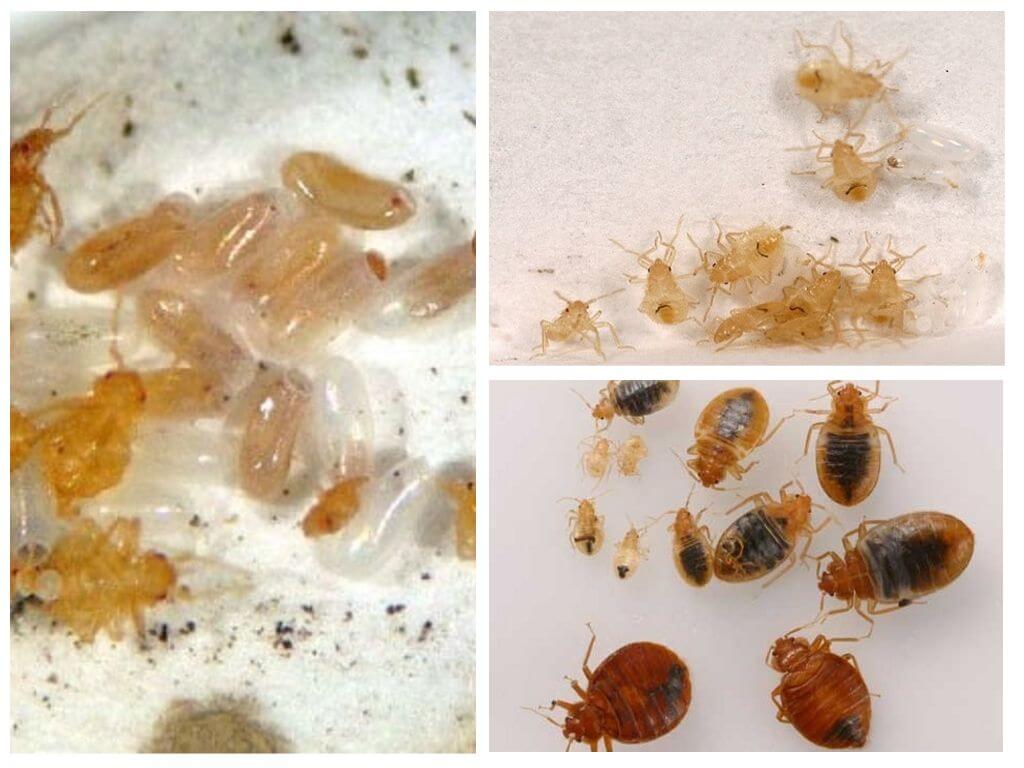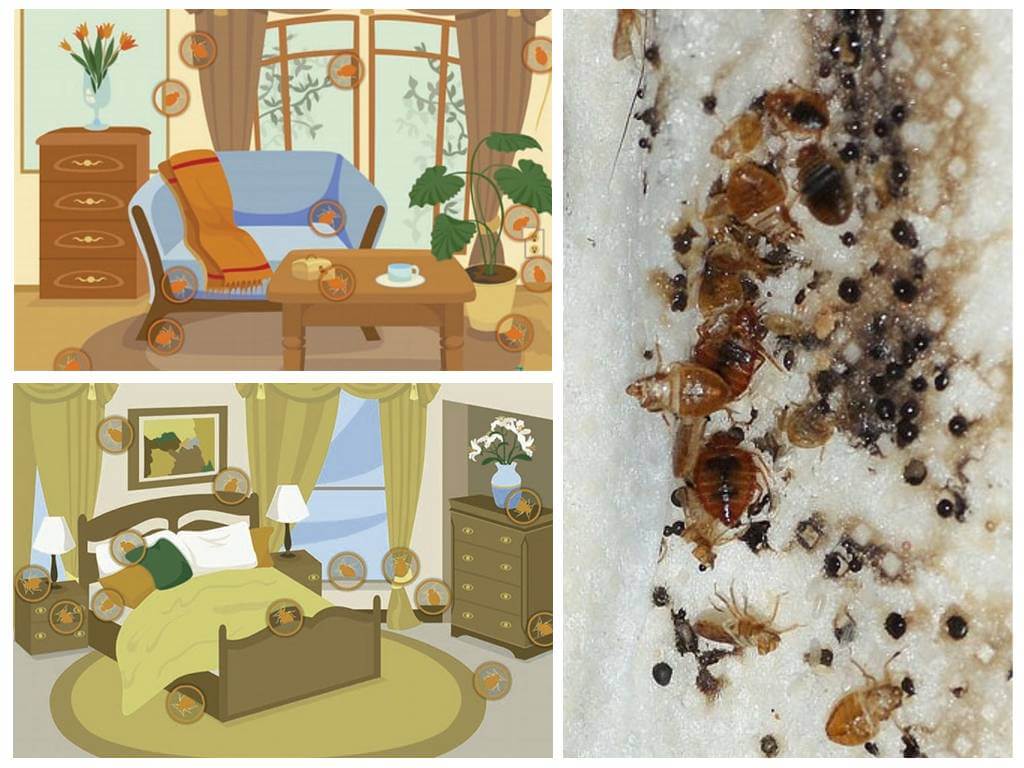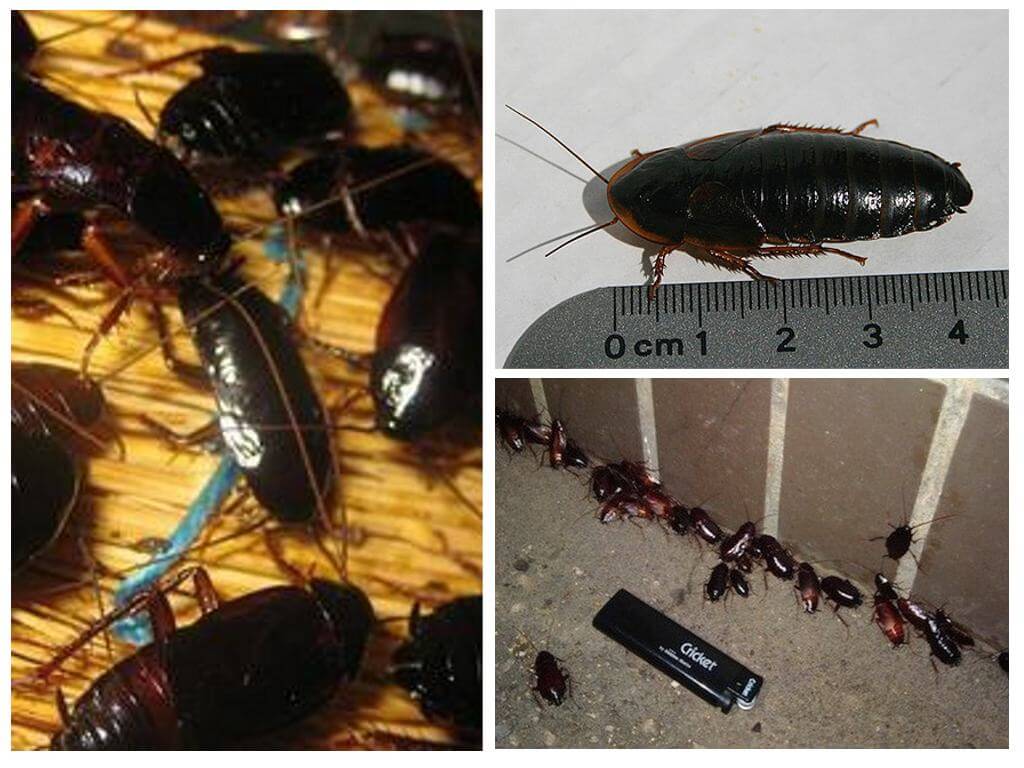Everything about bed bugs
Content
- Bed bugs
- Buggy satiety
- Bed Eggs Eggs
- Bedbug bites
- Allergy to bedbug bites
- Mating bedbugs
- Bedbug Nymphs
- Habitats of bedbugs in the house
- The death of bedbugs
- Black cockroaches
One of the naturalists wrote that bed bugs are insects of beautiful shape and noble colors, but the pleasant impression of meeting with them immediately disappears as soon as you learn about their bad passions.It is impossible to disagree with the author - there are no more unpleasant parasites visiting housing.
Bedbugs - the threat of the XXI century
Until the middle of the last century, blood-sucking insects flooded apartments and houses. This is evidenced by historical facts and artistic works. In the feuilletons of M. Zoshchenko, describing the life of ordinary citizens in post-revolutionary Russia, the bed bug was an integral attribute of the communal. Invention powerful insecticidal drugs pacified the morale of the pests for several decades.
However, the new century was marked by a sharp increase in the number of bed bugs. In the prosperous countries of England, Sweden, Australia, the United States, the number of areas inhabited by insects increased by 50%. The most numerous attack has undergone Florida, where the number of "bloodsuckers" has increased 10 times. Surges were noted in Brazil, Colombia. The problem has become global.
Entomologists have identified several reasons for population growth:
- The development of second-hand markets.
- The increase in the area of heated premises.
- Activization of tourism.
- Rapid adaptation of bed bugs to insecticides.
- The use of ineffective drugs, which largely contributes to advertising, offering not always high-quality goods.
On a note!
According to statistics, the entire population is in the risk zone, regardless of status, financial situation, sanitary condition of housing, apartment or house area.
Not everyone has seen the parasite and has a general idea of its appearance, methods of penetration into the apartments, the nuances of nutrition and reproduction. However, knowing everything about bed bugs, it is easier to deal with them. Insects will not be caught off guard, and even if they appear they will succeed quickly. get rid of bedbugs.
What a house bug looks like
A bed bug is a small insect with a flattened body that recognizes only one type of food: blood. Color and size of the parasite vary with saturation:
- Black bugs are very hungry individuals, which last fed 10-14 days ago, barely reach 4-5 mm in length and are practically invulnerable to mechanical impact.
- In its fat state, the insect acquires a scarlet color, greatly increasing in size up to 8.5 mm. In the event of a random movement, it is very easy to crush the bed bug that has just finished the meal.It is from these slow representatives that blood stains remain on the bed.
- In the majority there is a brown bug, as the bright color lasts only a few hours after the feast.
Females are somewhat larger than males, their ratio in the colony is the same. Each “young lady” accounts for one “cavalier”. For bed parasites is characterized by an incomplete cycle of transformation. From the eggs of the larvae (nymphs), the appearance of which represents a reduced copy of their parents.
Interesting!
A hatching nymph is white, transparent in color, often on her head is a miniature cap from an egg capsule that resembles a student's cap. The color of the newborn served the fact that a myth appeared, supposedly there are white bugs. However, in this form larva not for long. Driven by hunger, she goes in search of food and, after saturation, acquires a characteristic bedlope color.
Whom and when bite bed bugs
Adults (imago) and larvae feed exclusively on blood. When bugs are active, the person is sleeping. Therefore, often, especially in cases of weak contamination of the premises, night marches of bed suckers go unnoticed. The peak of activity is observed from 3 am to 5-7 am.
Features of the structure of the oral apparatus allow parasites to make meals with impunity. Insect accurately determines the location of the capillary and immerses in it the proboscis, which is hundreds of times thinner than a medical needle. Piercing the skin, a bed bug introduces an anesthetic enzyme through one canal, due to which a person does not experience pain during a bite, and through the second canal draws blood.
After drinking a portion of blood, the parasite moves a few centimeters and continues feeding. In order to get enough, he makes 4-5 punctures, a characteristic path becomes a reminder of. Meal lasts from 5 to 20 minutes. There is no reason to blame the bug for excessive blood-thirstiness - unlike other bloodsuckers, it goes on the hunt once in 7-10 days. More voracious nymphs - they can attack daily and make painful bites, as their saliva does not contain an anesthetic component.
Contrary to an erroneous opinion, bed bugs do not show intelligibility in the choice of the food object. Their victims can be people with any blood type, gender, age. The only explanation why bedbugs don't bite all people - This is a different susceptibility to bites.
In some people, they are manifested by large red blisters and severe itching, while others may have subtle points that do not cause discomfort. About 70% of people do not notice bedbug bites. In women and children, the skin is thinner and more susceptible to external stimuli, so they more often than men complain of attacks by bloodsuckers.
Interesting!
The researcher on his own initiative conducted an experiment to identify the reaction to bedbug bites. He selflessly put his hand to a hundred bloodsuckers. After that, he had vision loss and rapid heartbeat. Such symptoms were not caused by blood loss, but by a reaction to severe itching.
What are the dangerous bed bugs
The main harm and danger of bed bugs lies in their bites. On the affected area, swelling appears with a puncture point in the center and severe itching. When scratching the wound, it is possible to introduce bacteria. In people prone to allergic reactions, the following symptoms appear:
- rash;
- temperature increase;
- nasal congestion;
- difficulty breathing.
In rare cases, manifestations are possible. bug bite allergies, anaphylactic shock.
Important!
With a large accumulation of parasites and numerous regular attacks of bed bugs in children and the elderly can develop anemia.
Although bloodsuckers feed on blood and could be carriers of dangerous viruses, diseases, laboratory tests did not reveal the transmission of fatal ailments during bloodsucking. However, there is a version that bedbug feces are dangerous, in which hepatitis B is found. When inhaled, particles of excrement enter the human body and can cause infection. Research in this direction has not yet been completed.
Breeding features
Bed bugs multiply through traumatic insemination. Entomologists consider parasite mating to be a fascinating and unique process. The female has no special hole. This kind of defect nature more than compensated for the male, providing him with a sufficiently long, sharp sexual organ, which is often compared with a perforator.
The male pierces the body of the female indiscriminately and injects seminal fluid into it.This may be the abdomen, back and even the head area. Sperm is drained to a special department where eggs are formed. One successful insemination for a female bed bug is enough to increase the number of its relatives by 350-500 individuals. In the case of hunger, the formed eggs in the body of the female serve as her food source.
Interesting!
Every 20s bedbug egg empty This fact is less of a concern for scientists than the cause of unfertilized chicken eggs, but the entomologists have not yet managed to solve the phenomenon.
A female lays eggs in batches: 5 pieces daily. They are tiny, oblong in shape and protected by a durable adhesive sheath that most insecticides cannot destroy. After 7-10 days, the larvae appear from them, only size differs from adult individuals. Nymphs often eat and, as they mature, they renew their shell, which becomes small.
The process of molting is quite interesting. The larva arches in an arc, pumps itself with air and the cover bursts in a certain place. From under him a nymph crawls out in a new soft dress. It happens that a part of the old shell remains on the insect and it is forced to carry it with itself.
Interesting!
During the process of molting meets a special gland, which is located on the head. It secretes a hormone, which with a certain interval enters the blood and signals the change of shell. If the bed bug turns out to be without a head, he will be able to live without her, but he will not have to update the skin.
After the fifth molt, the nymph becomes a mature individual. Under favorable conditions, development from egg to imago lasts 35-35 days. In case of unfavorable process it may be delayed for 100 days.
Where do bed bugs live
Bed bugs prefer to live near the beds and even in the bed itself. Insects do not build nests, like ants, but still live crowded together. Their lair is an unpleasant sight — large bugs, small nymphs swarming among black feces, discarded shells and eggs.
In addition to clusters, the presence of parasites gives out a peculiar smell of spoiled raspberries, black dots on the wallpaper, small blood stains on the sheets. Find bed bugs can be in the nooks, apartments. The most common bedding parasite habitat:
- mattress stitches, bed, sofa design elements;
- cushioned furniture;
- inside outlets, household appliances;
- bedside cabinets, cabinet furniture joints;
- in clothes, in closets;
- interior items;
- Stuffed Toys;
- the cracks, the space under the baseboards, departed wallpaper.
On a note!
Once you have identified the pests, you should immediately start the destruction of bedbugs through health services or slack off by yourself. For this purpose it is better to use effective insecticidal preparations in the form of aerosols, sprays, emulsions. To rely on folk remedies for bed bugs especially not worth it. They can only help deter pests for a short time.
What are bloodsuckers afraid of?
Nature rewarded bed bugs with good adaptability. They lead a secretive lifestyle, in the absence of food they fall into hibernation, in which they can stay for about a year, the eggs are reliably protected by a shell that preserves the population. However, parasites also have vulnerabilities:
- Bedbugs do not like entomopathogenic fungus Beauveria bassiana, this is the conclusion reached by scientists from the United States and created on the basis of the spores of the fungus a means to destroy small bloodsuckers. For the experiment used a sheet treated with a solution of spores. Having walked along it for only an hour, in five days all individuals died from mycosis.Experimental insects infected other relatives, as they brought on their paws spores of a deadly fungus.
- At a temperature of + 50 ° C, the instant death of the bug occurs at any stage of development. This feature is often used for bed bug control. Small-sized pieces of furniture, clothes are carried out on a hot day in the sun and “roasted” for several hours. At home, use irons, hot water. Very effective and less labor intensive steam generator treatment.
- Low temperature from minus 18 ° С also destroys blood suckers.
- Strong pungent odors wormwood, tansy, wild rosemary vinegar, turpentine, paintwork materials, perfumes repel bedding.
- Bedbugs do not like dampness. Once on the wet surface, they begin to crawl, as if on tiptoes, afraid to wet the abdomen.
On a note!
Fear of dampness bugs used by entomologists to collect experimental specimens. When a large accumulation of parasites is found on the wall, a wet rag is spread on the floor. Sharp movement through the cardboard individuals shake off the floor.When it comes into contact with a wet cloth, bedbugs behave as paralyzed and can be laid slowly and carefully in a jar.
Interesting facts about bedbugs
Despite their tiny size, insects have amazing abilities:
- The bedbug does not know how to fly, jump, but shows exceptional sprint qualities. An adult individual for a minute overcomes a distance of about a meter, which allows insects to make long journeys.
- A dive from the ceiling, which is mistaken for flight abilities, is not explained by the cunning, the ingenuity of the parasite, but only by the multiplicity of the colony. In order to protect himself from the "rain of klopin", one resourceful man built a canopy-like frame and worked the edges with glue from flies. So he managed to quietly spend the night.
- Males of bed bugs are not characterized by intelligibility in connections. They make 200 matings per day. A female is not always a partner, an alternative can be a male from the same family, an insect of a different species, a young nymph.
- Studying the parasite, involuntarily the question arises, what are the bugs for. They can serve as a food source for spiders, cockroaches, predators, ticks,centipedes. In ancient times, healers were convinced that bed bugs could neutralize snake venom.
- Parasites determine their prey by the smell of carbon dioxide. At what distance they feel it, still remains a controversial issue. Modern sources claim that this distance is 2-2.5 meters. The naturalist Bernhard Grzhimek, who devoted his life to studying and describing the animal world, is inclined to believe that the smell of bugs is greatly exaggerated and they catch carbon dioxide only 2.5 cm away. They find the food object because they remember the terrain and walk on the “beaten »Route. It is enough to move the bed 1-2 meters and another 3 weeks the insects will wander in search of "lost hunting grounds".
Not less interesting fact concerns anabiosis, in which the bed bugs stay in the absence of food supply. In this state, they actively swallow air and peculiar air bubbles form in the intestines. These traces of the hunger strike can be used as evidence in cases where there is a lawsuit between the tenant and the landlord, proving the time of the bug in the room and the culprit of the infection of the apartment.

